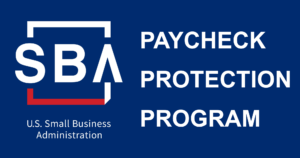Paycheck Protection Program (PPP) Forgiveness Application
 This past weekend the SBA issued some long-awaited guidance on requesting forgiveness of PPP loans in the form of an 11 page loan forgiveness application, including instructions, that borrowers will submit to their lenders. While this information leaves many unanswered questions, here are a few of the clarifying highlights from Mann Weitz & Associates, a CPA firm:
This past weekend the SBA issued some long-awaited guidance on requesting forgiveness of PPP loans in the form of an 11 page loan forgiveness application, including instructions, that borrowers will submit to their lenders. While this information leaves many unanswered questions, here are a few of the clarifying highlights from Mann Weitz & Associates, a CPA firm:
-The Covered Period used to determine if your spending and employment figures merit forgiveness was confirmed to be the eight weeks beginning on the date the loan funds were disbursed. As an alternative, borrowers with a biweekly (or more frequent) payroll schedule may elect to calculate eligible payroll costs using the eight week period that begins on the first day of their first pay period following their PPP Loan Disbursement Date (the Alternative Payroll Covered Period).
-The timing of payroll costs used to compute forgiveness has been explained as those payroll costs paid and payroll costs incurred during the eight week Covered Period (or Alternative Payroll Covered Period, as noted above). Payroll costs are considered paid on the day that paychecks are distributed or the borrower originates an ACH credit transaction. Payroll costs are considered incurred on the day that the employee’s pay is earned. Payroll costs incurred but not paid during the borrower’s last pay period of the Covered Period (or Alternative Payroll Covered Period) are eligible for forgiveness if paid on or before the next regular payroll date. Otherwise, payroll costs must be paid during the Covered Period (or Alternative Payroll Covered Period).
-As hoped, the salary/hourly wage reduction calculation has been changed to reflect averages of the periods and is compared to Q1, rather than comparing eight weeks to the last full quarter worked.
-The average full-time employee equivalent (FTE) will be used to determine whether the borrower’s loan forgiveness amount must be reduced due to a statutory requirement concerning reductions in full-time equivalent employees. Borrowers are eligible for loan forgiveness for certain expenditures during the Covered Period or the Alternative Payroll Covered Period. However, the actual loan forgiveness amount that the borrower will receive may be less, depending on whether the borrower’s average weekly number of FTE employees during the Covered Period or the Alternative Payroll Covered Period was less than during the borrower’s chosen reference period. FTE is determined using a 40 hour week, though a simplified method that assigns a 1.0 for employees who work 40 hours or more per week and 0.5 for employees who work fewer hours may be used at the election of the borrower.
-There is an exception to the FTE reduction in forgiveness. For (1) any positions for which the borrower made a good-faith, written offer to rehire an employee during the Covered Period or the Alternative Payroll Covered Period which was rejected by the employee; and (2) any employees who during the Covered Period or the Alternative Payroll Covered Period (a) were fired for cause, (b) voluntarily resigned, or (c) voluntarily requested and received a reduction of their hours. Any FTE reductions in these cases do not reduce the borrower’s loan forgiveness.
-There has been no change to the requirement that 75% of the loan proceeds are to be spent on payroll costs.
There are many questions to be answered and further clarification of the guidance is expected. The SBA has indicated that it will soon issue additional “regulations and guidance to further assist borrowers as they complete their application, and to provide lenders with guidance on their responsibilities.” The first step in this process is for borrowers to read through the application form and instructions.
The end of the covered period for all is weeks away, at a minimum, and the SBA did not state a due date for submitting this application. So take a breath, wait for more guidance, but in the meantime, start calculating FTEs and make sure you are keeping track of and maintaining documentation for expenses to be used in the forgiveness request.
Source: Mann Weitz & Associates
Category: News Releases




